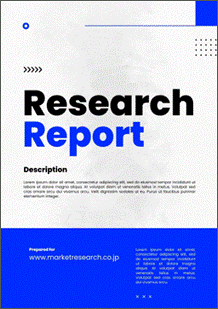 | • レポートコード:MRC2108A229 • 出版社/出版日:Mordor Intelligence / 2021年7月 • レポート形態:英文、PDF、150ページ • 納品方法:Eメール(受注後2-3営業日) • 産業分類:建築 |
| Single User | ¥555,000 (USD3,750) | ▷ お問い合わせ |
| Team User | ¥629,000 (USD4,250) | ▷ お問い合わせ |
| Corporate License | ¥1,036,000 (USD7,000) | ▷ お問い合わせ |
• お支払方法:銀行振込(納品後、ご請求書送付)
レポート概要
| Mordor Intelligence社は、プレハブ住宅の中東市場規模が、2021年から2026年の間に年平均約5.3%成長すると予測しています。本調査レポートは、中東のプレハブ住宅市場について調査・分析し、イントロダクション、調査手法、エグゼクティブサマリー、市場洞察、市場動向、種類別分析、国別分析、競争状況、市場機会・将来の見通しなどを掲載しています。 |
GCC prefabricated housing market is expected to grow at a CAGR of approximately 5.3% during the forecast period. The factors driving the growth of the market are the government’s strong economic diversification plans, which include developing and diversifying the economy and releasing its growth potential, with the ultimate goal of promoting development and competitiveness through increased government spending on key non-oil sectors and stimulating private investments. The market is driven by the increasing construction activities across the region and the lack of affordable houses for migrants working for the ongoing development projects in the GCC region.
The prefabricated housing construction industry in GCC has been severely impacted by the COVID-19 outbreak. The pandemic has impacted the growth across key sectors over the short to medium term and recovery is expected to be slow. The spread of coronavirus has dealt a severe blow to the prefabricated housing construction sector in Kuwait, with the number of building permits plunging by 40% in 2020. Official data showed permits for private residential buildings dipped by around 46% in the first 10 months of 2020 compared with the same period of 2019. The residential construction industry in Saudi Arabia is facing a shortage of affordable housing as a result of a growing population and an influx of migrants. This has encouraged the demand for prefabricated homes, as they are cost-effective and time-efficient. Moreover, energy efficiency, design flexibility, and faster completion are some of the other advantages of prefabricated buildings, which are anticipated to drive market growth.
Key Market Trends
Increasing Demand of prefabricated Housing in GCC
There is a rise in the urban population of GCC countries. The population density in the urban areas of GCC countries is increasing due to the inflow of workers from the rural regions towards the urban regions. The prefabricated housing market is driven by the increasing construction activities across the region and the lack of affordable houses for migrants working for the ongoing development projects in the GCC region. The government is also promoting prefabricated buildings solutions to provide residential houses in less period of time. There is an increase in demand for prefabricated housing because of less construction time and a lack of labor force in the country. There were many operational difficulties associated with COVID-19. United Arab Emirates construction workers stayed on-site during the pandemic, but social distancing measures resulted in a 10-30% drop in productivity.
Government Initiatives Driving the Construction Market
The GCC countries are focusing on economic diversification to reduce dependence on the oil and gas sector. To end this, they are planning a long-term strategy for sustainable growth. Therefore, they have chosen prefabricated housing and structural steel in the construction sector. In addition, public and private stakeholders have increased their investment in the infrastructure sector, further creating growth prospects for the housing market. In addition, the surge in tourism and upcoming events in the Gulf Cooperation Council region has led to a demand for fast and inexpensive housing construction solutions. In view of these factors, the GCC prefabricated housing construction market is expected to show moderate growth in the next five years. Prefabricated construction is being widely used in the GCC region since it helps in waste management and saves energy.
Competitive Landscape
GCC prefabricated housing market is fragmented. There are several international as well as domestic companies present in GCC prefabricated housing market. The market is expected to grow during the forecast period due to the increase in the prefab construction building investments and upcoming major projects in the country and other few factors are driving the market. High capital requirements and rapid technological advancement are important barriers to entry for new participants.
The market presents opportunities for growth during the forecast period, which is expected to further drive market competition. Major players are Strabag Dubai LLC, Extra Co Group of Companies, Albaddad International, Speed House Group of Companies, and Exeed Precast.
Reasons to Purchase this report:
- The market estimate (ME) sheet in Excel format
- 3 months of analyst support
1 INTRODUCTION
1.1 Study Assumptions
1.2 Scope of the Study
2 RESEARCH METHODOLOGY
2.1 Analysis Methodology
2.2 Research Phases
3 EXECUTIVE SUMMARY
4 MARKET INSIGHTS
4.1 Current Market Scenario
4.2 Technological Trends
4.3 Insights on Supply Chain/Value Chain Analysis of the Prefabricated Housing Industry
4.4 Cost Structure Analysis of the Prefabricated Housing Industry
4.5 Impact of COVID-19 on the Market
4.6 Insights on Different Types of Materials used in Prefabricated Housing Construction
5 MARKET DYNAMICS
5.1 Drivers
5.2 Restraints
5.3 Opportunities
5.4 Porter’s Five Forces Analysis
5.4.1 Bargaining Power of Suppliers
5.4.2 Bargaining Power of Consumers / Buyers
5.4.3 Threat of New Entrants
5.4.4 Threat of Substitute Products
5.4.5 Intensity of Competitive Rivalry
6 MARKET SEGMENTATION
6.1 By Type
6.1.1 Single Family
6.1.2 Multi Family
6.2 By Country
6.2.1 Saudi Arabia
6.2.2 United Arab Emirates
6.2.3 Qatar
6.2.4 Rest of GCC
7 COMPETITIVE LANDSCAPE
7.1 Overview
7.2 Company Profiles
7.2.1 Strabag Dubai LLC
7.2.2 Extra Co Group of Companies
7.2.3 Albaddad International
7.2.4 Speed House Group of Companies
7.2.5 Exeed Precast
7.2.6 Memaar Building Systems (MBS)
7.2.7 Dubox
7.2.8 Bawan Metal Industries Co.
7.2.9 Specialist Services Group
7.2.10 Red Sea International*
8 MARKET OPPORTUNITIES AND FUTURE TRENDS
9 APPENDIX
9.1 Marcroeconomic Indicators (GDP breakdown by sector, Contribution of construction to economy, etc.)
9.2 Key Production, Consumption,Exports & import statistics of construction Materials